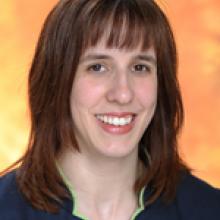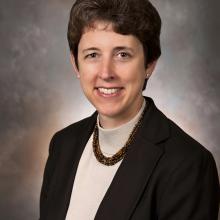Deep Impact: The Changing Educational Landscape and Faculty Support Teams
Concurrent Session 7

Brief Abstract
An explosion of interest in online and blended learning provides opportunities for rethinking models for faculty support and for partnerships for collaboration with faculty support teams. This session will discuss possibilities for developing, sustaining, and growing a dynamic team that meets the goals and mission of your organization.
Presenters



Extended Abstract
As the educational landscape changes, more and more faculty are being asked to use innovative teaching techniques incorporating novel technologies, new paradigms, research, data, etc. Many faculty support centers are now conceptualized to combine several support features, such as curriculum, technology, and evaluation, in one place (Kamin, Souza, Heestand, and O'Sullivan, 2006; Sonnino, et al., 2013; Anderson, Love, and Haggar; 2019, Intentional Futures, 2018).
The foundation for members of the team that support faculty with curriculum, technology and teaching lies in their academic preparation, which introduces them to theories, models, and the systematic approaches unique to their specialty. Varying models and roles exist for support of faculty and partnerships for collaboration with faculty support teams. How you think about developing, sustaining, hiring and growing your support teams requires an understanding of both the organizational needs and the organizational structure. Organizational structure matters especially when considering the roles, functions, and outcomes of work, but organizations are vastly different in how they deploy faculty support, and this can impact both hiring and retention. Laying the groundwork for proper development and retention of a faculty support team can save the institution time and money.
This presentation will be interactive and allow for discussions about developing, sustaining, and growing a dynamic team that meets the goals and mission of your organization. We will discuss how to go about getting to an ideal state, exploring the roles for faculty support teams, the mindset of team members, PD for the team, hiring principles, and bringing new members to the team. The audience will be asked to share personal experiences and work together on developing an ideal end state for their own organization that they can carry to their leadership for discussion.
References
Anderson, M.C., Love, L.M. & Haggar, F.L. Looking Beyond the Physician Educator: the Evolving Roles of Instructional Designers in Medical Education. Med.Sci.Educ. 29, 507–513 (2019). https://doi.org/10.1007/s40670-019-00720-6
Intentional Futures. Instructional design in higher education. https://intentionalfutures.com/insights/portfolio/instructional-design/. Accessed September 27, 2018.
Kamin, C., Souza, K. H., O’sullivan, P., Heestand, D., & Moses, A. (2006). Educational technology infrastructure and services in North American medical schools. Academic Medicine, 81(7), 632–637. doi:10.1097/01.ACM.0000232413.43142.8b
Kim, J. and Maloney, E. J. (2020). Learning Innovation and the Future of Higher Education. Johns Hopkins University Press.
Koszalka, T. A. (2013). Instructional Designer Competencies: The Standards (Fourth Edition): 4th ed. Information Age Publishing.
Lowenthal, P., & Wilson, B. G. (2010). Labels do matter! A critique of AECT’s redefinition of the field. TechTrends: Linking Research & Practice to Improve Learning, 54(1), 38–46. doi:10.1007/s11528-009-0362-y
Segal, K., Jethwani, M. M., Marquart, M., Curtain, M. and Lowe, K. (2021, September 24). The power of faculty support spaces. Inside Higher Ed. Retrieved from https://www.insidehighered.com/advice/2021/09/24/importance-support-spaces-faculty-well-being-opinion
Sonnino, Roberta E. MD; Reznik, Vivian MD, MPH; Thorndyke, Luanne A. MD; Chatterjee, Archana MD, PhD; Ríos-Bedoya, Carlos F. MPH, ScD; Mylona, Elza PhD; Nelson, Kathleen G. MD; Weisman, Carol S. PhD; Morahan, Page S. PhD; Wadland, William C. MD Evolution of Faculty Affairs and Faculty Development Offices in U.S. Medical Schools, Academic Medicine: September 2013 - Volume 88 - Issue 9 - p 1368-1375 doi: 10.1097/ACM.0b013e31829ed496
Surry, D. W., & Robinson, M. A. (2001). A taxonomy of instructional technology service positions in higher education. Innovations in Education & Teaching International, 38(3), 231–238. https://doi-org.proxy-tu.researchport.umd.edu/10.1080/14703290110051406

